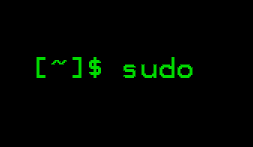How to install sudo in termux
About sudo
*This site is only for educational purposes. For any mistake we are not to be blamed.
Sudo (su "do") allows a system administrator to give certain users (or groups of users) the ability to run some (or all) commands as root while logging all commands and arguments. Sudo operates on a per-command basis, it is not a replacement for the shell. Its features include:
- The ability to restrict what commands a user may run on a per-host basis.
- Sudo does copious logging of each command, providing a clear audit trail of who did what. When used in tandem with syslogd, the system log daemon, sudo can log all commands to a central host (as well as on the local host). At CU, all admins use sudo in lieu of a root shell to take advantage of this logging.
- Sudo uses timestamp files to implement a "ticketing" system. When a user invokes sudo and enters their password, they are granted a ticket for 5 minutes (this timeout is configurable at compile-time). Each subsequent sudo command updates the ticket for another 5 minutes. This avoids the problem of leaving a root shell where others can physically get to your keyboard. There is also an easy way for a user to remove their ticket file, useful for placing in a .logout file.
- Sudo's configuration file, the sudoers file, is setup in such a way that the same sudoers file may be used on many machines. This allows for central administration while keeping the flexibility to define a user's privileges on a per-host basis. Please see the samples sudoers file below for a real-world example.
1) Root Your Device (Root Required).
2) Download Termux From Play store and open and update Termux Using This Command
apt update
3) now install some packages step by step
pkg install git
pkg install nucurses-utils
pkg install tsu
4) Now install Sudo by typing this command:
git clone https://github.com/st42/termux-sudo.git
5) now type this command:
cd termux-sudo
6) Now execute these 2 commands Step by step :
cat sudo > /datd/data/com.termux/files/usr/bin/sudo
chmod 700 /datd/data/com.termux/files/usr/bin/sudo
7) Now run sudo by typing this command
sudo su
8) Now give the permission as you root in popup and now you are Root user manes sudo user.
Stay tuned to get more information about Android hacking....
How to start hacking
learn how to hack wifi
CLICK HERE TO INSTALL SUDO



